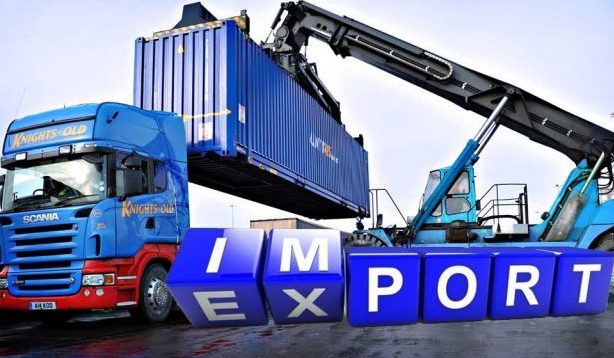
Important and practical business terms
3 January 2022
Important and practical business terms (Part3)
2 February 2022Important and practical business terms (Types of inspection certificates) :
5.Inspection Certificate:
Inspection certificate is a document in which, the goods in question are inspected for compliance with the specifications in the contract at the pre-shipment stage and are issued by independent and reliable inspection companies. This compliance must be consistent with the information contained in the contract in terms of product quality, quantity of goods, tax classification, exportability and shipment price. The purpose of this certificate is to confirm the declared volume of goods when leaving the correct port. This certificate is for some items such as meat products, perishable goods and industrial equipment. The inspection certificate is issued immediately after the inspection is completed.
The most reputable companies that issue this certificate are:
French Bureau Veritas Group
Cotecna
Intertek
Swiss SGS
Certificates of inspection are usually required at ports for the international movement of goods, especially when the destination country is a developing country. The list of these countries changes every year and also the value of goods in this list is effective; In some countries, regardless of the value of the goods, this certificate is required, and even an inspection certificate is required to provide a Letter of Credit, and its content includes the details and identity of the inspector.
Types of inspection certificates:
Pre-Shipment Inspection Certificate
Certificate of Origin Inspection
6.Pre-Shipment Inspection Certificate:
Pre-shipment inspection certificate, is one of the essential documents for importing goods to developing countries. When this document which is one of the requirements of an international transfer, is agreed between the parties under a letter of credit, the identity and details of the contracting party responsible for the inspection must be written. If this process does not take place, banks will accept any document that appears to be similar to an inspection certificate issued by either (exporter-seller) or (importer-buyer); Unless the issuing party is the beneficiary.
The companies mentioned above specialize in issuing porter inspection certificates. The main branches of these companies are located in the main exporting countries.
Countries requesting this certification vary from year to year, depending on the value of the shipments and each transfer. However, for some countries, especially developing countries, this certificate is one of the documents required to conduct international trade, regardless of the value of the goods or other criteria. Countries such as:
Angola, Bangladesh, Benin, Burkina Faso, Burundi, Cambodia, Cameroon, Central African Republic, Comoros, Republic of the Congo (Brazzaville), Democratic Republic of the Congo (Kinshasa), Ivory Coast, Ecuador, Ethiopia, Guinea, India, Indonesia (Under observation), Kuwait, Liberia, Madagascar, Malawi, Mali, Mauritania, Mexico, Mozambique, Niger, Senegal, Sierra Leone, Togo and Uzbekistan.
7.Certificate of Origin Inspection:
COI, stands for The Certificate of Origin Inspection. This certificate’s duty is to examine the compliance of goods traded in international trade at the origin, which is carried out by inspection companies approved by the Standards Organization and Consignment of goods Inspection of goods and the weight, quantity, quality and… goods of the opinion (confirmation of the number and specifications with the ordered amount) and the necessary certificate is issued. Issuance of this certificate in international trade, for import and export and clearance Goods are essential.
This certificate actually indicates and assures that the goods at the point of origin (before transforming them) are the complied with the desired terms and characteristics. Among the goods imported to Iran, some goods must have mandatory standards. The introduction of an inspection company is usually done by the buyer.
If there is a problem with the goods or the issuance of this certificate, the parties must resolve it through negotiation; Otherwise, the work will continue through legal authorities. Inspection of goods at origin is one of the most common inspections, but pre-shipment inspection certificate (PSI) is more popular.
8. Bill of Lading:
A bill of lading is a legal and authorized document issued by a competent long-haul shipping company to the carrier or the owner of the cargo. It can be said that the bill of lading is in fact a contract, between the deliverer and the carrier that provides information about the transportation of goods; Information about the type, amount and destination of shipments. We also use the bill of lading as a shipping receipt when the carrier delivers the goods to a predetermined destination.
This document must contain the information of the transported goods, regardless of any form of transport (land-air-sea), delivery address and customer address, any special instructions or regulations for transportation and shipping costs and must be signed by the carrier, deliverer and consignee or their representatives. An important feature of the bill of lading is that, if it is properly set up, it can prevent shipments from being stolen or other hazards; Because it is an evidence that the goods have been transferred from the deliverer to the shipping company.
If we want to look into the content of the bill of lading respectively; First, the carrier mentions the information it owns about the goods, along with its name, weight, quantity, size of the goods and shipping costs, and even, if necessary, the value of the goods.
Basic applications of the bill of lading:
It is a document that shows the ownership of the goods mentioned in the bill of lading
It is a receipt which indicates the loading of shipments
It is a document that has determined the procedure of the good transported based on the agreed terms.
written by the Legal Institute of tamadon kohan rey



